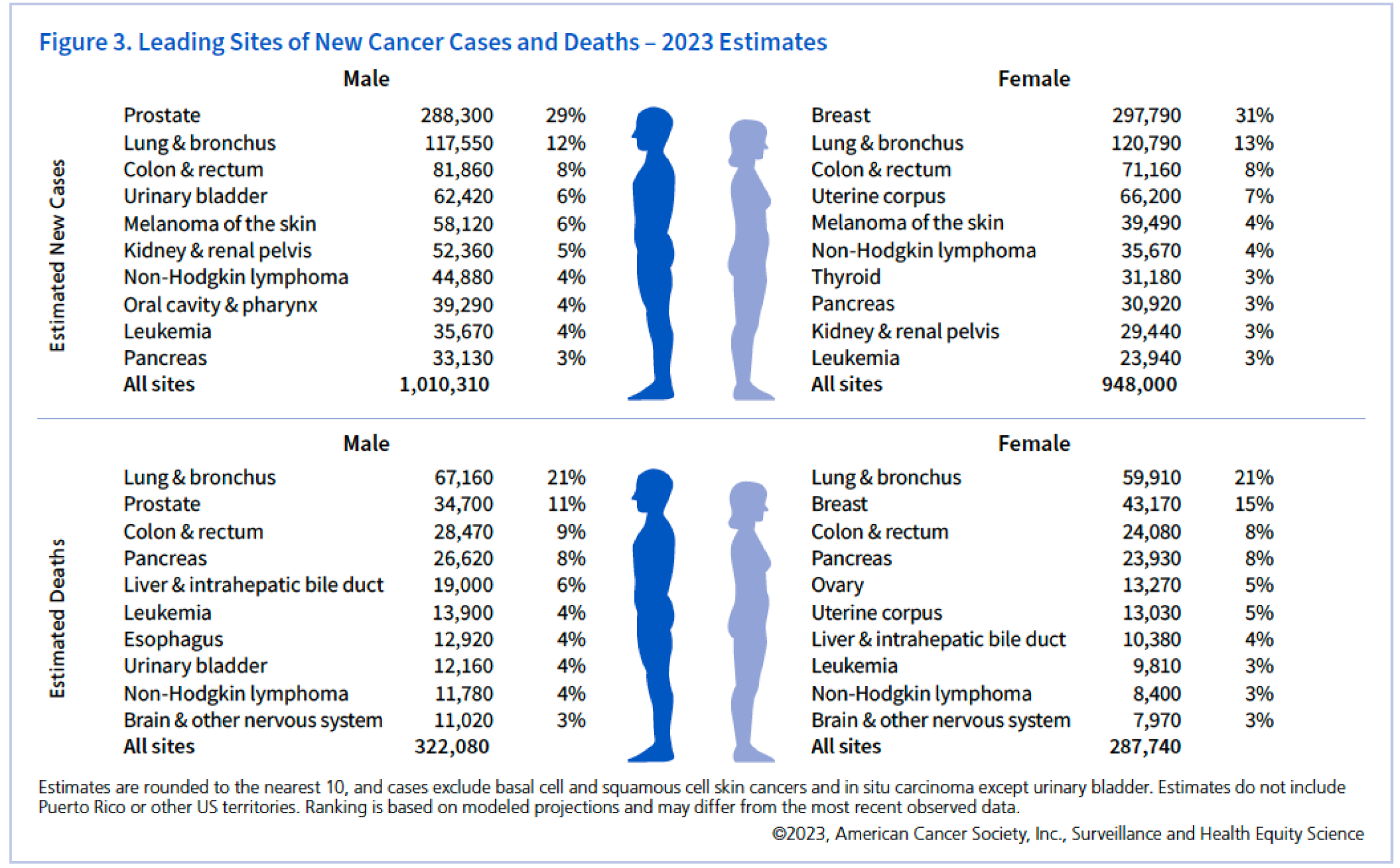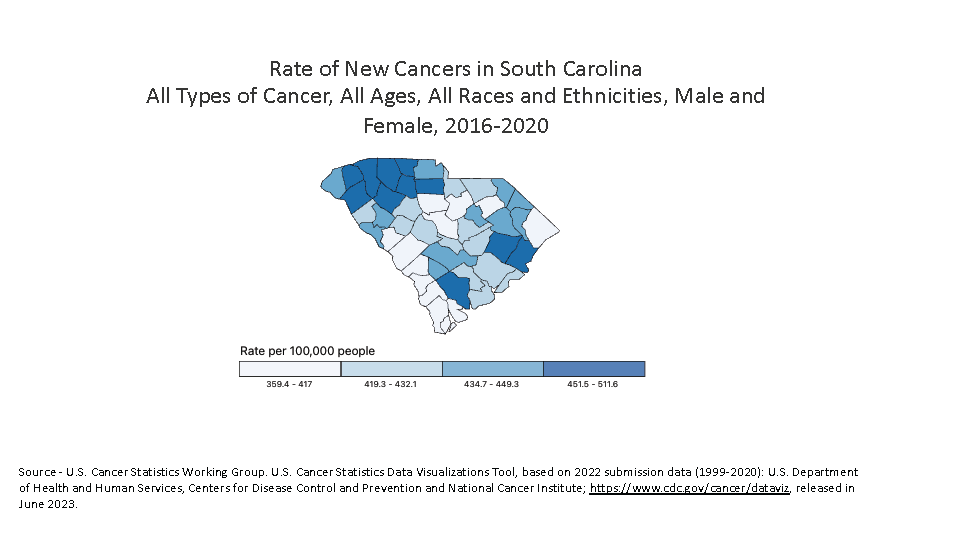Statistics
1 in 26 women and 1 in 23 men will develop colorectal cancer.
We are making progress against colorectal cancer. Colorectal cancer death is decreasing for adults 50 and older, mostly due to early detection through screening and improvements in treatment. This progress contrasts with rising mortality in adults under 55 since the mid-2000s.
The American Cancer Society Cancer Facts & Figures 2023 reports colorectal cancer incidence rates have generally declined since the mid-1980s, with the pace accelerating to 3%-4% annually during the 2000s due to widespread screening uptake among adults ages 50 and older, then slowing to 1% from 2011 to 2019. However, incidence rates have increased by 1%-2% per year in individuals younger than 50 years of age since the mid-1990s for unknown reasons. Colorectal cancer incidence rates and trends typically include appendiceal tumors; however, they are excluded from the incidence data presented herein because they are increasingly understood to be biologically distinct from colorectal cancer and their rates are increasing steeply because of incidental diagnosis (e.g., during appendectomy or imaging), as well as a newly reportable common subtype (carcinoid) that is often indolent (not aggressive).
Colorectal cancer mortality rates have dropped by 57%, from 29.2 (per 100,000) in 1970 to 12.6 in 2020, mostly due to earlier detection through screening and improvements in treatment; the death rate has declined steadily by about 2% per year from 2012 to 2020. Similar to incidence rates, however, this progress contrasts with rising mortality rates in adults under 55 years of age since the mid-2000s.
More than half (55%) of colorectal cancers in the US are attributable to potentially modifiable risk factors, including excess body weight, physical inactivity, long-term smoking, high consumption of red or processed meat, low calcium intake, heavy alcohol consumption, and very low intake of fruits and vegetables and whole-grain fiber. Hereditary/genetic and medical factors that increase risk include a personal or family history of colorectal cancer or adenomatous polyps, certain inherited genetic syndromes (e.g., Lynch syndrome), a personal history of chronic inflammatory bowel disease (ulcerative colitis or Crohn’s disease), and type 2 diabetes. Regular long- term use of nonsteroidal anti-inflammatory drugs, such as aspirin, reduces risk, but can have serious adverse health effects, primarily gastrointestinal bleeding.

Cancer Statistics, 2023

Colorectal cancer is beatable and treatable!
Screening is key to finding colorectal cancer early when it can be prevented or treatment is less invasive and most successful. The 5-year relative survival rate for colorectal cancer is 64%. If found early the 5-year survival rate is 90%, however only 39% of patients are diagnosed at an early stage.
For more statistics on colorectal cancer, visit the American Cancer Society’s Cancer Facts and Statistics.
Colorectal cancer in South Carolina
According to the American Cancer Society, this year in South Carolina 2,550 people will hear “you have colorectal cancer.” An estimated 910 deaths will occur from colorectal cancer.


Who is getting screened in South Carolina? View the Centers for Disease Control and Prevention colorectal cancer screening report card for South Carolina.
Read more:
Cancer in South Carolina 20-Year treads for incidence, mortality, and survival published by the South Carolina Central Cancer Registry.
South Carolina Department of Health and Environmental Control Regional Cancer Profiles: